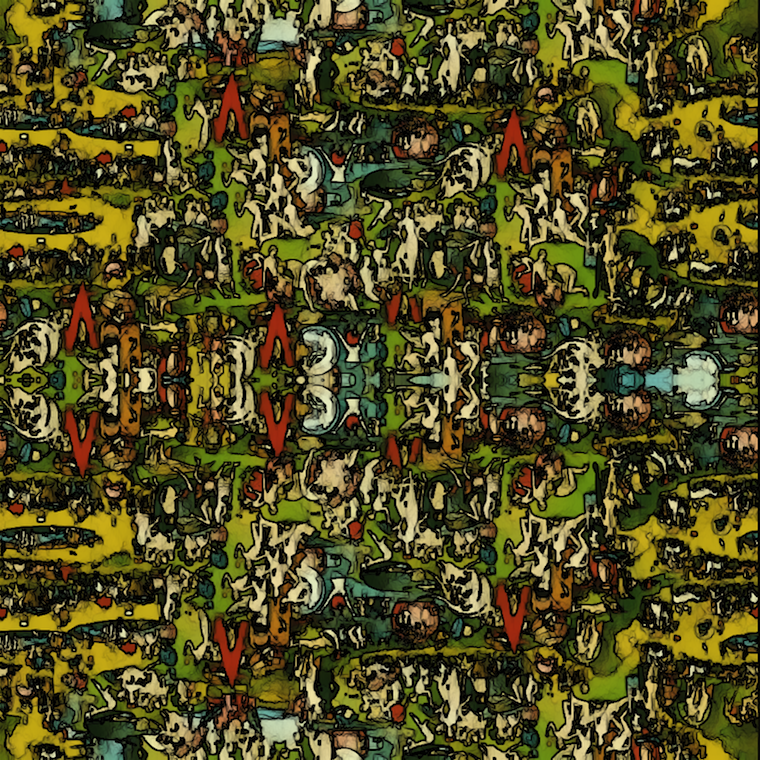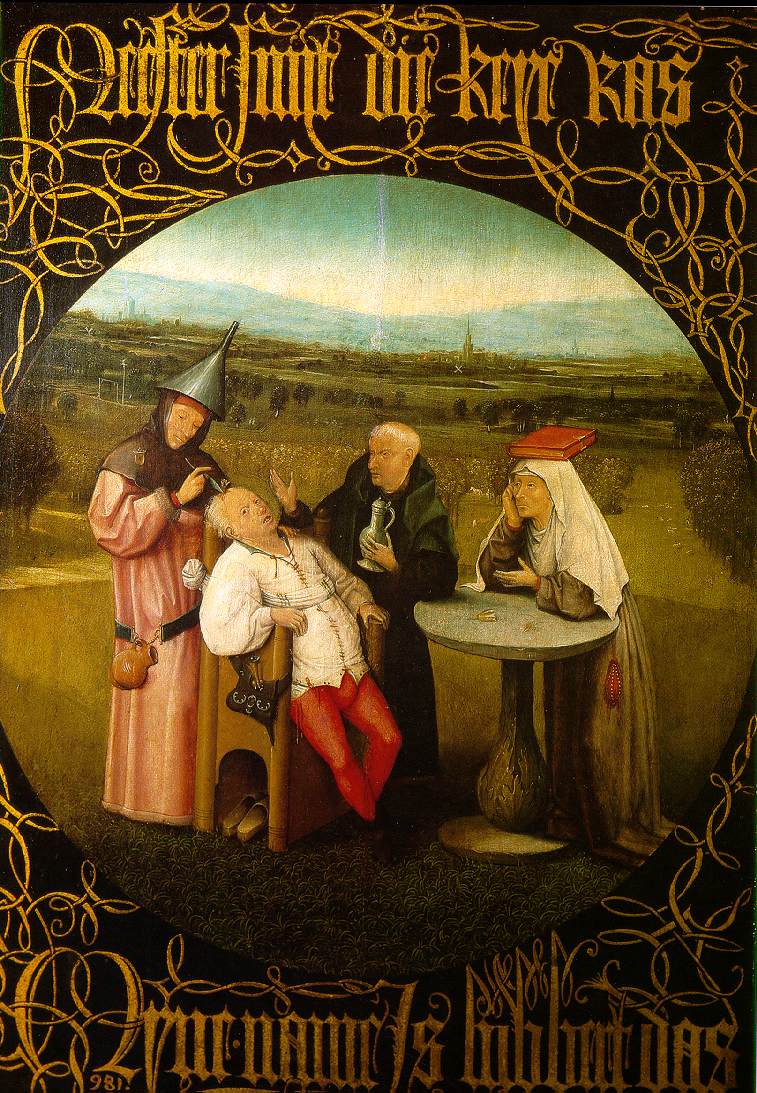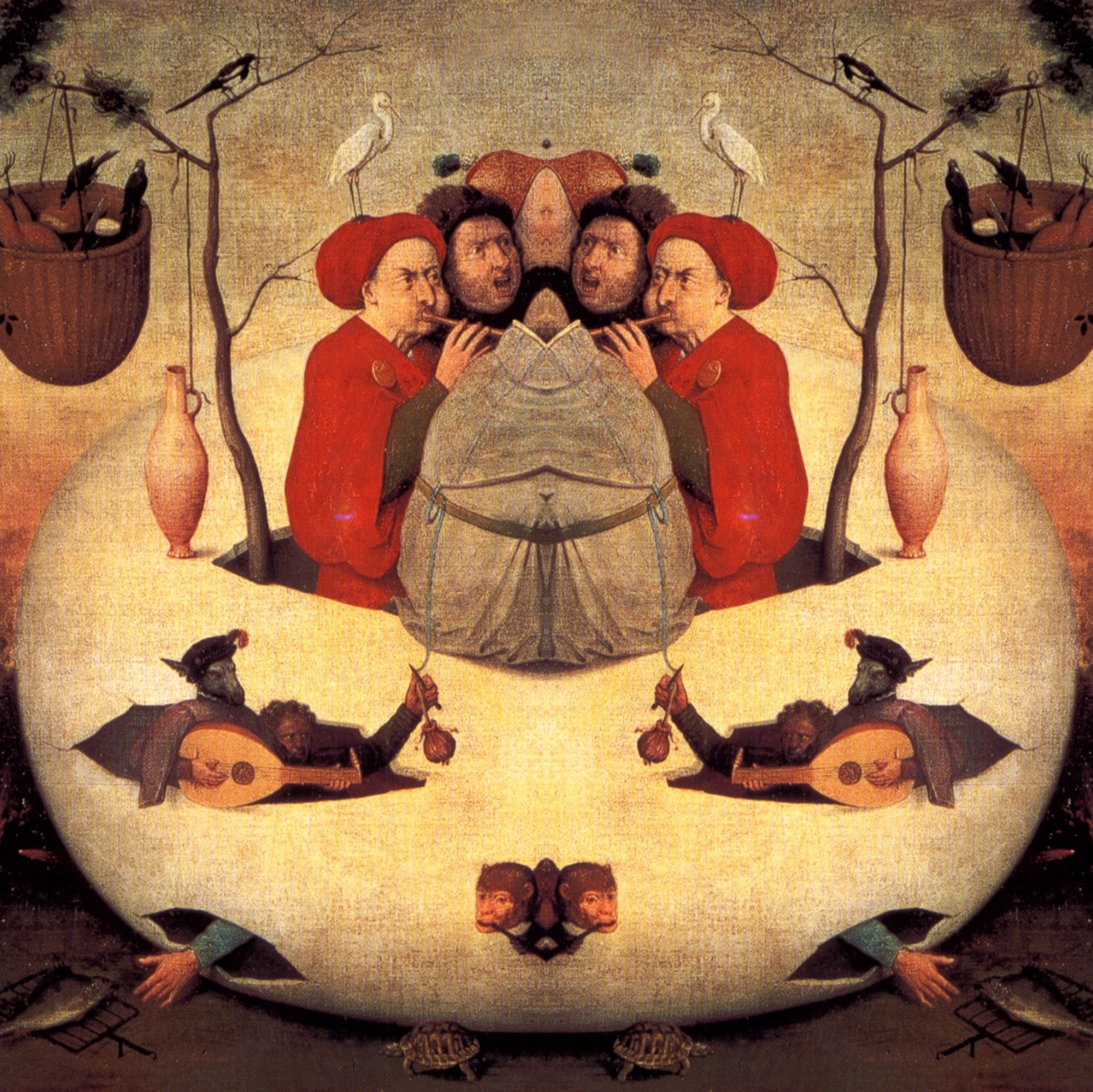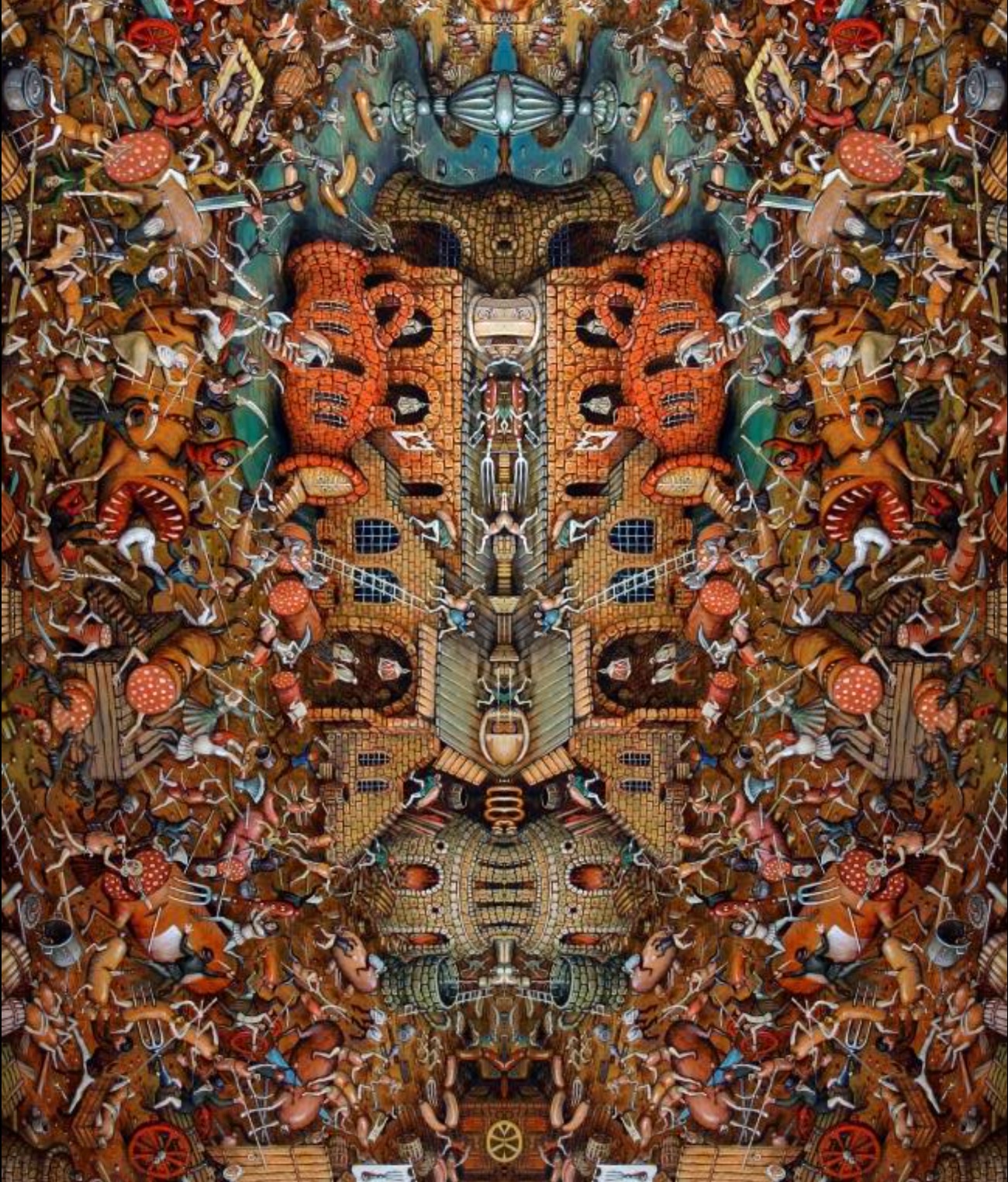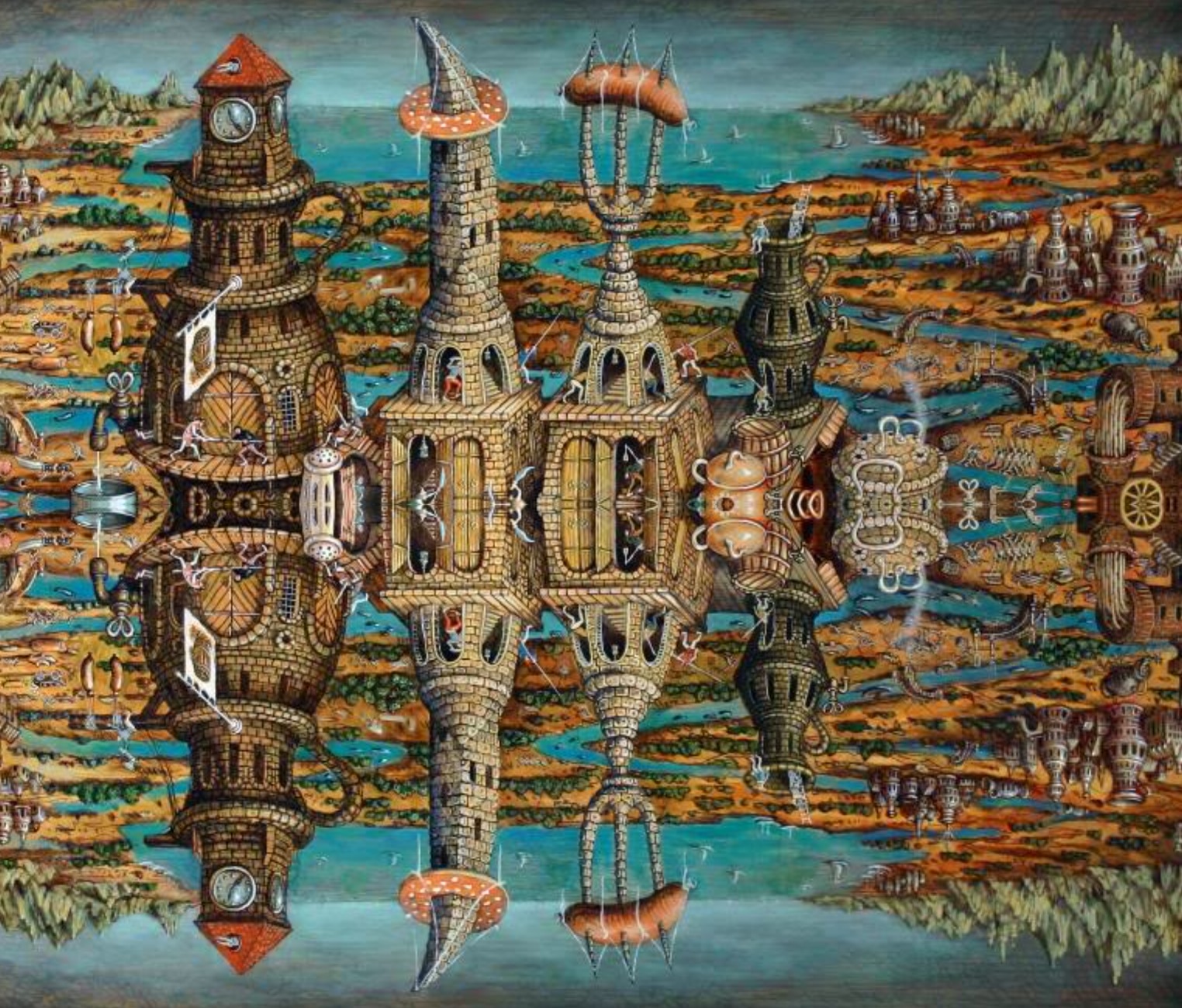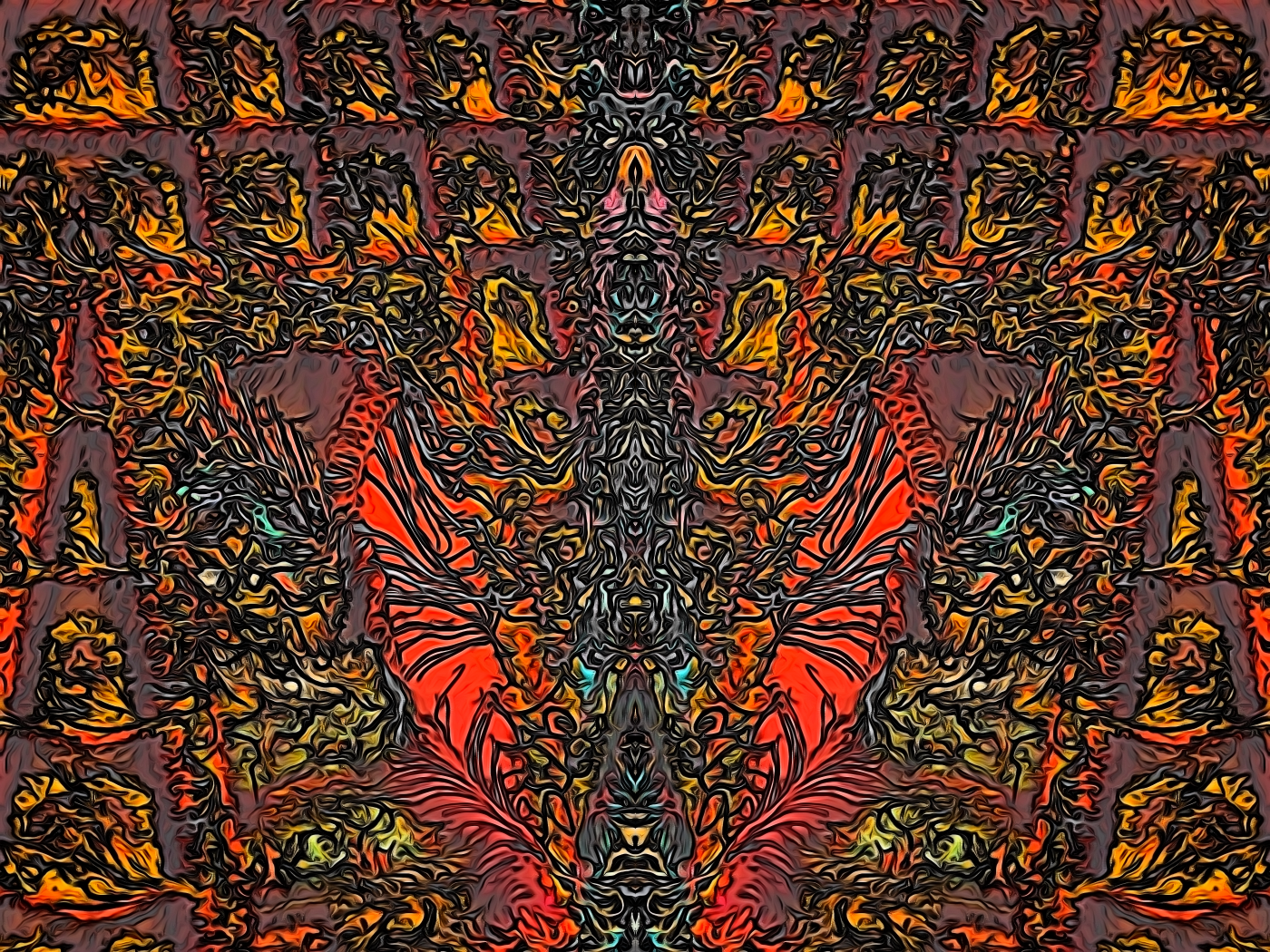
Heck 48×36″ (2016)
Hieronymus Bosch, The Garden of Earthly Delights – interactive tour
Noah Charney’s Salon article, Why Bosch’s Hell feels so real: The answers lie in Freud, Jung and the humble cronut. On the 500th anniversary of the painter’s death, we examine why this specific vision of eternal damnation endures, is too much a jumble to be very sharp, especially given the subject matter, nevertheless, he presents much that is of interest.
As an artist with one foot in the psychedelic/surreal and the other in the phenomenology/psychology of experience, his most personally pertinent point is:
Liminal zones or beings occupy the narrow space between two opposites, a bit of both, wholly neither.
Or beings! For me, there is a lot of pointed, and necessary, wordplay wrapped up in what for Howard was likely an innocent comment.
Be in is the most prominent play. The meeting of being also comes to mind.
Charney:
What people most remember (so vividly that a toned-down version featured in a children’s book, “Pish Posh Said Hieronymus Bosch”) are his hybrid creatures in which he linked two animals, or an animal and a human: a fish with legs, a dog with an armadillo’s back, a leopard with a rhinoceros horn, a rabbit with porcupine quills. These figures, often peripheral to the main subject of the painting, are what ingrain in the mind: disturbing, haunting, but with a childlike macabre playfulness. They embody the uncanny, which is defined as “strange or mysterious, especially in an unsettling way.” They can make you smile and send a shiver down your spine. These are uncanny, liminal creatures.
Bosch’s universe strikes us that much more deeply because we recognize the otherworldly tableaux that he paints. It is the world of our dreams: part nightmare, part fantasy. Our dreams are, themselves, liminal (our mind is awake and wanders while our body sleeps) and are full of Freud’s unheimlich. Dreams can be fantastic (but feel real) or realistic with interjecting unreal fantasy elements. Thus the dream state, and its contents, are both liminal.
It is crucial to add: “embody the uncanny” is necessarily a two-way operation of consciousness. This ‘twoness’ engages the liminal dichotomy. This instantiates the fourness which reveals a crossing between the poles of the uncanny liminal opposites and the uncanny revelation provided by psyche becoming wed to its depiction outside of its embodied self.
Unfortunately, Charney makes a hash of the projective operations of psyche in his serial deployment of Freud, Jung, Klein, and Lacan, for the sake of psychologizing this, in my terms, fourness. Heck, Bosch existed in his own explicit context, a context prior to psychology yet completely enveloped by Christianity!
Bosch’s originality must be traced back to its own questions of “origins.” Bosch himself thematized creativity on the grisaille exterior (fig. 2) of the Garden of Earthly Delights triptych, where he shows the original creation ex nihilo, as described in Genesis, by the Creator himself. Those scholars, including myself, who see Bosch’s painted demons as an innovative watershed in the history of Netherlandish painting note that they remain his signal inventions, especially connected to his recurring novel visions of the afterlife.
Yet this particular originality of Bosch derives from ultimate origins: God’s Creation and the Garden of Eden. Bosch was motivated by the problem of evil, particularly the origins of evil in the world; therefore, in order to trace his own originality, we must go still farther back in time, even to the moment before the advent of humanity, Adam and then Eve, to examine his frequent fascination with the Fall of the Rebel Angels. For Bosch the problems of humanity began with the origin of evil, and his representations show clearly and consistently that evil already exists in the Garden of Eden, to provide temptation for Adam and Eve. Therefore, to get a proper sense of Bosch’s creative impetus, we must first look directly into the face of Satan, by tracing his own origin: his fall from grace and divine favor in heaven, transforming him from his former angelic identity as Lucifer (or light-bearer.) (2009) Larry Silver, Jheronimus Bosch and the Issue of Origins, Journal of Historians of Netherlandish Art (v1.1)
The Esoteric Bosch – The Garden of Earthly Delights commentaries by Lee van Laer
One of my first series of visual experiments using mirror symmetries subjected Bosch and the Flemish Breughels to remixing.
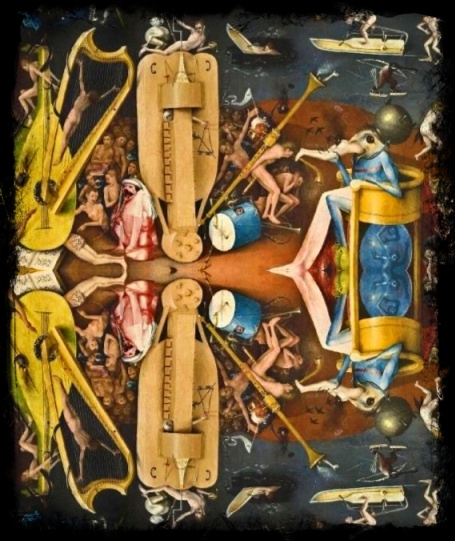
More recently, came a sort-of, hommage to Bosch.
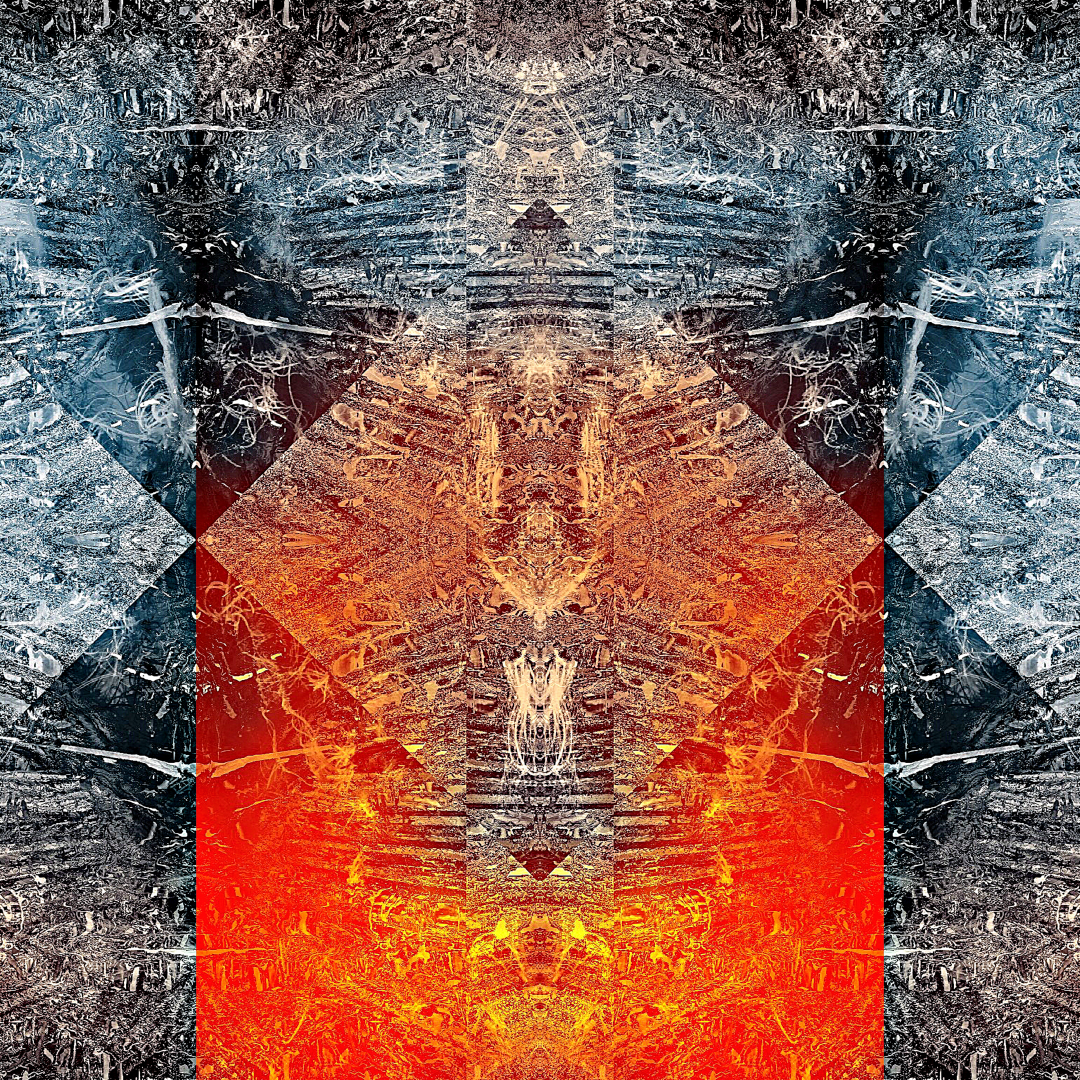
Bosch In the Orient (2016) 16×16




